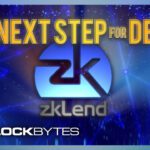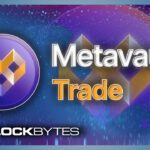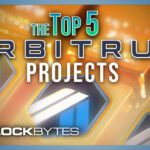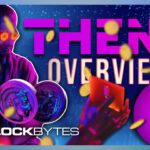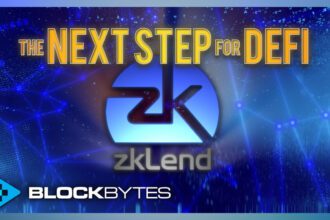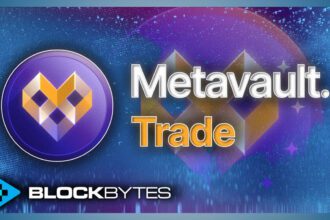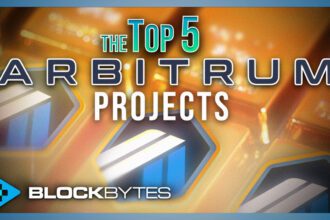Greetings my fellow space travelers, welcome back!
It’s time for the second edition of Shooting for the Stars, a monthly glimpse into the Aurora/NEAR ecosystem. The first edition was a broad overview of some Aurora basics, as well as NEAR/Aurora ecosystem updates from the first half of 2022; if you haven’t read it I highly recommend doing so before jumping into this one.
The past month was very busy for both the Aurora and Near communities. NEARCON 2022 took place mid-September and there were some exciting announcements made, particularly involving the Aurora engine and the Aurora+ platform. DeFi moves at lightspeed and this month was no different; we have a lot to cover, so strap yourselves in and prepare for liftoff!
If you have any questions, comments, or you feel like I’ve missed something important, don’t hesitate to reach out to me on Twitter or join the lrn.fi Discord!
Aurora+ Updates
The CEO of Aurora Labs, Alex Schevchenko, revealed some major upgrades to Aurora and Aurora+ during a seemingly historic presentation on the first day of NEARCON. It seems the developers at Aurora have been working some magic behind the scenes in their quest for continuous improvement.
The first thing to note are the changes to the Aurora+ dashboard. The new interface showcases a sleek new design that incorporates the new updates that have been released. These include:
Aurora+ Swaps
Aurora Labs have partnered with 1inch to bring in-house swaps to the Aurora+ platform. The partnership provides users with the most efficient swaps in the ecosystem, available directly on Aurora+. You can visit the swap page here to see all supported tokens.
Fiat Onramp
Another partnership, this time with Transak, has brought more new features to Aurora+. Their fiat onramp is now live, enabling the purchase of $AURORA using a VISA or Mastercard. Users can now acquire $AURORA directly from the Aurora+ interface without having to take the previously necessary steps to bridge tokens to the Aurora network. The onramp is yet another feature that decreases user friction and narrows the gap separating DeFi from the rest of the financial world.
Aurora Network Developments
Aurora Engine 2.7.0
Early this month, Aurora Labs announced an exciting upgrade to the Aurora Engine. The past few months for the team have involved scrupulous testing of their Engine to, in their words: “ensure its exactness to the Ethereum Virtual Machine”, go-Ethereum (GETH) in particular.
The upgrade entailed Fuzz Testing that showed some slight inconsistencies between the Aurora EVM implementation and GETH; the new Engine upgrade is said to have fixed many of the minor discrepancies.
For more info, check out the full article on the new Engine release.
Cross-Contract Calls
Another major development supplementing the Engine upgrade announcement came just days prior to the NEAR convention: cross-contract calls on Aurora. I will attempt to explain the concept as simply as possible in an effort to inspire appreciation worthy of such a remarkable breakthrough.
Within an EVM network, applications are able to interact with each other through calls and delegatecalls – functions that allow one smart contract to interact with another.
Cross-contract calls are call functions that enable a connection to non-EVM compatible dApps (such as those on NEAR), from an EVM compatible chain (like Aurora). With the release of cross-contract calls on Aurora, both protocols and users are now able to access any dApps on NEAR directly without having to leave the Aurora network. This advancement brings increased interoperability between Aurora and NEAR, reducing the cross-usage barrier and propelling the flow of liquidity between applications on the two networks.
Solidity on NEAR?
Following the cross-contract call announcement at NEARCON, Shevchenko dropped another tech bomb on the audience and on the crypto world at large. The developers at Aurora have come up with a solution to be able to launch Solidity-written applications directly onto NEAR.
This incredible feat is made possible by a type of binary code called WebAssembly (WASM for short). WASM is designed to work alongside other languages, to allow high-performance applications to run on web pages. For example, imagine you write an advanced financial analytics tool in Python, but you want to run it on a web browser (unlike JavaScript, you can’t run Python on a web browser directly). An option at this point would be to precompile a WASM executable, using your Python script, allowing you to run your analysis application on the web.
Pretty cool right? So how does this pertain to Aurora?
Smart contracts written in Solidity can be compiled to WASM code, effectively allowing them to run on any web browser. As per the recent announcement, Aurora is now capable of storing precompiled WASM code, essentially allowing developers to build with Solidity directly onto NEAR.
*Note: As you can probably tell, I am not a developer. At this moment there are at least 3 engineers pulling their hair out upon reading my oversimplification of the Aurora team’s achievement. My goal was only to try and explain the news to my fellow laymen, in an attempt to give a surface level understanding of what has been accomplished. Please consult your doctor before conversing with engineers on this topic. Side effects include: looking stupid.
Aurora has published an article detailing the important updates I’ve covered here, take a look!
Aurora Key Metrics
| MARKET CAPITALIZATION | |||
| Bottom | Peak | Close | |
| July | 44.6M | 109.8M | 101.6M |
| August | 77.3M | 137.8M | 90.4M |
| September | 78.2M | 97.3M | 73.3M |
| PRICE | |||
| Bottom | Peak | Close | |
| July | $1.27 | $1.94 | $1.71 |
| August | $1.17 | $2.22 | $1.38 |
| September | $1.08 | $1.41 | $0.99 |
| TVL | |||
| Bottom | Peak | Close | |
| July | 197.7M | 252.5M | 206.2M |
| August | 145.9M | 204.3M (open) | 151.9M |
| September | 147.6M | 176M | 144.8M |
| UNIQUE ADDRESSES | ||
| Created | Total (EOM) | |
| July | 72,136 | 4,315,786 |
| August | 99,176 | 4,414,962 |
| September | 60,293 | 4,475,255 |
| DAILY TRANSACTIONS | |||
| Bottom | Peak | Average | |
| July | 53,609 | 147,909 | 76,972 |
| August | 39,107 | 71,082 | 59,534 |
| September | 21,824 | 54,197 | 46,509 |
Trisolaris H2 Roadmap
In the first edition of Shooting for the Stars I outlined how the first half of the year had fared for Aurora’s flagship DEX. During these tumultuous times, Trisolaris has continued to ship and deliver, adapting as needed to the force of market headwinds. They secured funding from five VC firms during the first half of 2022, allowing them to continue to expand their operations despite bear market inactivity. A few weeks ago, Trisolaris released their plans for the the rest of the year in an H2 Roadmap as a guideline for users and investors seeking alpha about the future of the DEX. Here are the highlights of said roadmap:
Tri-Strategized Vaults
The most exciting and now, most anticipated upcoming new product release from Trisolaris are strategized vaults. Vaults are aptly named because they are just that: places to park your assets until you need them. Strategized vaults employ yield-generating strategies on the user’s behalf, and then compound that yield into more of the deposited asset. These vaults are developed with one goal in mind: to increase capital efficiency on the user’s behalf, while maintaining a healthy amount of risk. Although Yearn was the first to design such a product, we have seen yield aggregators and DEXes across other networks release their own iterations of strategized vaults in order to maximize user capital efficiency while minimizing user effort. Trisolaris aims to bring these effective tools to Aurora’s ecosystem.
Trisolaris has stated that this will be their biggest product release over the coming months.
Cross-Chain Swaps: Axelar, Aurigami Partnership
In early-August, Trisolaris announced a partnership with Aurigami and Axelar to bring cross-chain swapping and lending/borrowing to Aurora participants and DeFi users at large.
Aurigami is a DeFi money market on the Aurora network. They offer variable reserve factors from 15-25% and collateral factors from 40-80%, both depending on the asset. Currently, they are hosting roughly $12M in TVL. You can read a Q2 2022 report on their Medium page, as well as other informative articles on their protocol. For more detail, check out their docs.
Axelar is a universal overlay network that delivers secure, cross-chain communication that connects various networks across web3 via proof-of-stake and permissionless protocols. It is a blockchain that connects blockchains. Basically, they send messages across networks on behalf of other protocols. Axelar has only recently launched, their token being released to the public as recently as the 27th of this month.
Check out their website and docs for more detailed info.
The Goal
Trisolaris has given us an update regarding this partnership, and their role in providing cross-chain swaps. The partnership will operate using Squid, a liquidity routing module that enables cross-chain swaps and payments on Axelar. Squid enables assets to flow cross-chain from a user to any dApp on any chain without the need for bridges.
The partnership’s endeavor is quite ambitious, and its effectiveness remains to be seen, but if successful it could yield groundbreaking interoperability and network composability. If realized, this collaboration will enable Aurora/NEAR users to connect to any chain seamlessly. Imagine you could buy any token on any chain using Trisolaris, and subsequently use that token as collateral to borrow any other token on any chain using Aurigami. Wouldn’t that be something!
To read more about the lofty goals of this triple partnership check out this article posted by Aurora Labs, or this one by Axelar.
To read Trisolaris’s full H2 Roadmap click here.
Trisolaris First to Receive $USN Incentives
In an effort to further support the growth of the Aurora and NEAR ecosystem(s), Decentral Bank has introduced a 1M $USN incentive program designed to encourage builders on both networks and bootstrap user growth.
To kick-off the new initiative, Trisolaris has received 100k $USN from Decentral Bank to be distributed via their 3pool farm to incentivize liquidity providers and farmers alike. They are the first protocol on Aurora to be granted $USN incentives, but something tells me they won’t be the last!
Here are the links to the Twitter post and Trisolaris’s 3pool farm.
For an in-depth overview of Trisolaris, the very talented Brick Frog wrote a fantastic article which I highly recommend reading.
Here are Trisolaris’ Twitter page, Medium page, and docs for more info.
Bastion: New Features and Upgrades
As Aurora’s leading lending protocol by TVL, Bastion has established themselves as the go-to money market for Aurorians.
In case you didn’t know (and because I didn’t cover this in the first edition), Bastion operates using Compound’s Collateral Token (cToken) model. When you deposit an asset into Bastion, you receive its collateral counterpart in return. For example, if you were to deposit 100 USDC, you would receive some amount of cUSDC in return. cTokens are interest bearing – their value is always increasing relative to their underlying token. By holding cTokens in your wallet, you are accruing the interest generated from supplying your tokens to the protocol.
This month, Bastion has released a new feature for their users to enjoy:
New Underlying Swap Router
Bastion has introduced an underlying swap router function to allow users to easily swap between cTokens and their underlying assets.
Currently the swap router only supports cUSDC and cUSDT, but Bastion has stated that they will be adding more stablecoin pools in the future. cTokens can be used as collateral to further borrow more assets, or they can be paired and provisioned into the liquidity pool to earn trading fees from the swaps made between them.
To read Bastion’s full announcement regarding their new feature, click here.
Oracle Upgrade
Bastion news for this month also included the completion of an Oracle Time-Weighted Average Price (TWAP) Anchoring upgrade for their protocol. In mid-June of this year, an incident occured with Flux Protocol’s pricing of USDT on the Aurora Mainnet, which caused a spike in the USDT price, resulting in lost funds suffered by 20 addresses. The recent TWAP Anchoring upgrade completed by Bastion is aimed at preventing similar situations from occuring in the future.
The upgrade factors in TWAP of Trisolaris prices; any deviations of 15% or greater from the Flux price feed will invoke prices being frozen until they are rectified. Bastion has also built a monitoring system for their Oracle on their dashboard, which shows relevant data points from the Flux price feeds and TWAP from Trisolaris.
The new upgrade has been independently audited by Watchpug, the report of which can be found here. Here is the Oracle contract on Aurorascan for those of you who wish to look deeper.
Here are the links to Bastion’s Twitter page, Medium page and docs for more info on the protocol.
Bug Bounty Programs
This month, both Aurigami and Bastion have debuted bug bounty programs in partnership with Immunifi.
Aurigami is offering $500k for the report of vulnerabilities, details can be found here.
Bastion is offering $250k, details to be found here.
More Aurora News
- Decentral Bank announces launch of USN V3.0.
- Aurora now live on ONTO wallet.
- RocketX launched on Aurora.
- Metaweb announces its $30M blockchain fund, Aurora to be funded.
- Decentralized exchange Arctic soft launches on Aurora. Details here.
- Perpetual exchange NEX partners with Arctic DAO.
- Aurigami presents a new RiskDAO dashboard.
- Chainstack now supports Aurora.
- Swidge swap and bridge launches beta on Aurora.
- HOTCROSS is now bridgeable to Aurora through the HOTCROSS bridge.
- BoringDAO’s bridge aggregator launches on Aurora. Details here.
- ChainPort integrates the Aurora network. Details here.
- Router Protocol integrates with Aurora.
Extra Aurora Content
- Shevchenko presentation at NEARCON.
- Twitter space with Aurigami, coinhall and NEARblocks about DeFi on NEAR/Aurora.
- AMA with Trisolaris and Axelar on a cross-chain future
- CEO Alex Shevchenko thread on decentralization.
- Article by Altcoinbuzz about Aurora.
- Trisolaris write-up from Brick Frog (another reminder because it’s really good).
- Aurigami Twitter space with Decentral Bank on stablecoins.
- Aurora x Brave AMA with both company’s CEOs.
- Pagoda twitter space with Aurora and others.
Resources
The NEAR Ecosystem
Despite the market’s continuous drop down to goblin town, the month of September was a positive one for the NEAR ecosystem. While Aurora might have stolen the show with some impressive new upgrades, none of it would have been possible without the structural foundation that is NEAR, who itself had some exciting new developments to show for the final month of Q3…
The Rainbow Bridge to Ethereum
The Rainbow Bridge is a fully trustless, decentralized bridge created by the NEAR protocol team, used to transfer tokens from Aurora, NEAR and Ethereum.
Learn about how the Rainbow Bridge works here.
The Merge
Unless you’ve just returned from a solo, month-long meditation retreat in a cave at the top of Mt Everest, you’ve probably heard about Ethereum’s successful Merge to Proof of Stake. Prior to this monumental event, many cryptoheads were wondering about how it would go and what externalities might result subsequently. Several dApps, particularly bridges and lending protocols, took precautionary measures to ensure the safety of user funds in case of any unforeseen abnormalities. The Rainbow Bridge team was no exception.
In anticipation of the Merge, Aurora/Rainbow Bridge users were notified that the bridge to or from Ethereum (Aurora <-> NEAR remained open) would be paused 1-3 days prior to the Merge, to be reopened once the Merge had successfully been completed and live for some time. At the time of writing the bridge has just recently been opened, live once again in a post-merge world.
You can read the full article released from Aurora Labs on the Merge and its foregone implications on Aurora users here.
NEAR-Native Token Connector
Aurora was on fire at NEARCON, releasing yet another super exciting product upgrade:
It is now possible for NEAR-native tokens to be bridged to Ethereum using the Rainbow Bridge.
Projects need no longer design their tokens to be multichain, deploy their tokens separately, nor do NEAR-native tokens need to be wrapped before making the journey to the Ethereum network. The Aurora team has developed a magnificent piece of tech that allows NEAR tokens to exist on Ethereum just as they exist on NEAR. Moreover, messages can be attached to said tokens, allowing some action to be performed once their journey across the Rainbow is complete (e.g. interest bearing tokens).
This new tech is currently in beta, to be released once the team is confident that no problems will arise once in the public’s hands. For builders on NEAR, the Aurora team is now accepting token whitelisting applications for this program. For users, keep an eye out for your favorite NEAR tokens on Ethereum!
NEAR Foundation Releases Transparency Report
On the first day of NEARCON, NEAR foundation CEO Marieke Flament delivered a presentation on behalf of the foundation dubbed “A Year in Review”. The talk was structured around presenting the first ever Transparency Report released by the foundation, in an effort to increase communication with NEAR’s community and investors. The report shows actions taken by the foundation during the last 12 months, detailing the foundation’s areas of focus during this time, and providing data around the allocation of funds to meet their goals.
I will provide some relevant data from the Report, the full version can be found with the link provided above.
$800M Ecosystem Fund
In Q4 of 2021, the NEAR foundation announced the launch of an $800M Ecosystem Fund. The allocation breakdown and progress of such is summarized below:
So far, the foundation has deployed $540M of the $800M and it seems their efforts have been far from futile. In just the first two quarters of 2022, the growth of the network has been staggering:
- The number of unique accounts on NEAR has skyrocketed from 1.1M to 15.6M
- The number of weekly active developers has grown from 250 to 1,500
- The number of DAOs has grown from 50 to 700
- The number of projects deployed on NEAR has ballooned from only 100 to 750 total projects
Funding and Treasury Allocation
The NEAR foundation received $560M in funding in 2022, primarily from the following patrons: Tiger Capital, FTX, a16z, Circle, and Dragon Fly.
The foundation’s treasury holds roughly $1.82B in assets, allocated as follows:
I highly recommend reading the full report for all the details; moving forward the foundation has committed to releasing quarterly reports to provide their community with more clarity regarding their decisions in the months and years to come.
Coinbase Getting NEARer
The NEAR network started this month off with a bang, with news of juggernaut Coinbase announcing its support for withdrawals and deposits of NEAR on the NEAR network:
This will no doubt come as a relief for many NEAR-Coinbase users, eliminating the extra step of having to bridge assets over from another network.
Learn and Earn
The new integration was complemented by another announcement further strengthening Coinbase-NEAR relations: a Learn and Earn program!
The new initiative utilizes Coinbase’s Earn program to incentivize curious minds to educate themselves on the NEAR network and utility of its token. The educational series will be funded via staking rewards earned through the management of NEAR tokens by Coinbase over the course of 3 years. The program is aimed at scaling user knowledge of all things NEAR, offering rewards for those taking the time to increase their NEAR expertise.
Click here to learn more about the NEAR earn program.
Native USDT on NEAR & Aurora
A few weeks ago, in collaboration with NEAR, Tether announced the launch of their native USDT on the NEAR network. NEAR has now joined 13 other networks (Ethereum, Avalanche, Solana, and Polygon to name a few) in hosting Tether’s native stablecoin on their network.
Implications For Aurora and the Rainbow Bridge
Now that USDT is native on NEAR, two separate USDT tokens will exist on Aurora and NEAR: bridged USDT and native USDT. To simplify the new change for users, Aurora Labs has chosen to update the symbol for bridged USDT:
- Bridged USDT will now be denoted as USDT.e
- The native version on NEAR will show as USDT
No action is required by the users, the change in metadata will not affect the contract address, nor will it affect previously bridged USDT other than the name change.
A few things to note regarding bridging:
- Both USDT and USDT.e will be bridgeable between NEAR and Aurora
- Users can bridge USDT.e to Ethereum and will receive USDT on Ethereum
- NEAR-native USDT cannot be bridged to Ethereum, it must be swapped for USDT.e beforehand
It is expected that exchanges on both Aurora and NEAR will create USDT/USDT.e pools for users to be able to easily swap between the two.
For more information regarding the NEAR-native USDT launch, read this.
Circle Announces USDC Support for NEAR
The title says it all… Global fintech giant Circle has announced their integration of USDC onto the NEAR network in a multi-chain expansion effort to broaden the reach of their stablecoin. NEAR’s Javascript and Rust-based dApps will now have access to native USDC, giving developers access to the second-largest stablecoin on the market. USDC is expected to go live on NEAR early 2023.
Read NEAR’s full announcement on the subject here.
NEAR Key Metrics
| MARKET CAPITALIZATION | |||
| Bottom | Peak | Close | |
| July | 2.27B | 3.47B | 3.21B |
| August | 2.86B | 4.56B | 3.31B |
| September | 2.72B | 4.08B | 2.86B |
| PRICE | |||
| Bottom | Peak | Close | |
| July | $3.04 | $4.76 | $4.23 |
| August | $3.72 | $6.02 | $4.36 |
| September | $3.47 | $5.22 | $3.56 |
| TVL | |||
| Bottom | Peak | Close | |
| July | 237.6M | 318.8M | 316.8M |
| August | 285.9M | 326.5M | 292.4M |
| September | 273.7M | 299M | 274.4M |
| UNIQUE ADDRESSES | ||
| Created | Total (EOM) | |
| July | 1,517,117 | 17,310,543 |
| August | 1,402,329 | 18,712,872 |
| September | 1,853,762 | 20,566,634 |
| DAILY TRANSACTIONS | |||
| Bottom | Peak | Average | |
| July | 225,603 | 460,275 | 342,615 |
| August | 274,725 | 1,996,616 | 427,261 |
| September | 276,869 | 959,686 | 543,995 |
More Highlights From NEARCON
NEARCON is a big event for NEAR partners and participants. This year was no different; much anticipated announcements were made, future developments were teased, and excitement was amplified. Although we have detailed some, specifically regarding upgrades to Aurora, to cover it all is too tall a task, so here are some bulleted highlights for the inquisitors.
- NEAR co-founder Ilia Polosukhin announces the NEAR Digital Collective (NDC) – a new framework for NEAR governance. Full presentation can be found here.
- Phase 1 of NEAR’s sharding tech ‘Nightshade’ was unveiled, details can be found here.
- NEAR leads a new $100MM VC fund with Caerus Ventures, focused on Web3’s evolution of culture, media and entertainment. Details here.
- Sheila Warren from the Crypto Council for Innovation discusses Web3 regulatory frameworks. Watch the full talk here.
- NEAR co-founder Ilia Polosukhin discusses the upcoming year for NEAR, watch the full talk here.
- Ryan Selkis of Messari discusses navigating crypto cycles. Full talk here.
- Sweatcoin founder Oleg Fomenko describes how the project was built, and how NEAR is powering a new movement economy. Full talk here.
- SailGP describes the project and their relationship with NEAR. Full discussion here.
- Armored Kingdom discusses their metaverse game and what to expect from Armored Kingdom on NEAR. Full talk here.
- Marieke Flament, NEAR CEO, talks with Circle CEO Jeremy Allaire about Crypto Payments and Fintech. Full discussion is here.
- Various DAO founders take a “Deep Dive into DAOs and Governance”.
Extra NEAR Content
- NEAR ecosystem overview by HELPeR
- Decentral Bank AMA with Ref Finance
- Town Hall about Web3 gaming on NEAR
- Article by Proximity on Nightshade-enabled cross-chain composibility
- Article about NEARPay
Resources






